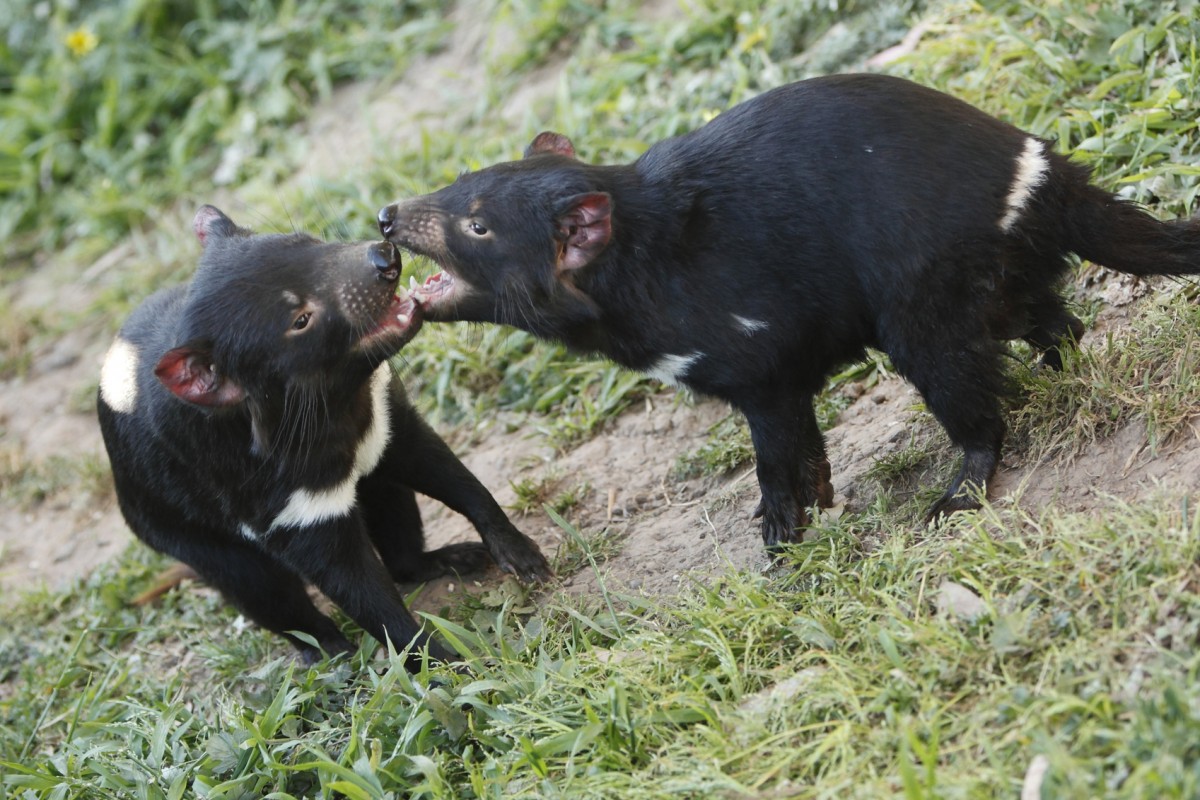Australia is home to some of the deadliest creatures on the planet, including venomous snakes, poisonous spiders and hungry sharks. The Tasmanian devil may not be toxic, but the species is known for its vicious behavior. The carnivorous marsupial may look cute and cuddly, but its sharp teeth can take down a kangaroo. Unfortunately, feasting on its prey next to other devils, along with other social biting, has led to the spread of a contagious cancer called devil facial tumor disease (DFTD).
“Cancer isn’t contagious,” you might be thinking. Don’t worry, that’s true in humans. DFTD is a rare case. Other transmissible cancers have been documented in dogs and clams, but neither has affected its host species as severely as DFTD. It has killed over 80 percent of Tasmanian devils since its discovery in 1996, leading the species to be classified as endangered. The cancer originated from one animal, whose cells now persist long after her death in other devils across Tasmania. When a diseased devil bites another devil, living cancer cells are directly transferred into the open wounds, leading to another case of DFTD — and another dead devil, in most cases.
Epidemiological models have predicted extinction of the entire species, but some populations that contracted the cancer long ago have persisted. Now, in a recent Nature Communications paper, Brendan Epstein and colleagues suggest that perhaps the Tasmanian devil has undergone a rapid evolutionary response to fight its contagious foe.
Darwin hypothesized that positive selection would occur when certain traits — or genes, though he didn’t know about genes at the time — gave a reproductive advantage, leading to that trait persisting in the population. Examples of positive selection, like sickle cell trait in response to malaria, are rare, mostly because it can be difficult for scientists to identify the force driving their selection. In the case of DFTD, researchers were able to identify genomic variation in two regions that could be involved in fighting cancer in three independent populations of devils. These areas contain genes that are known to be associated with cancer risk and immune regulation in humans.
One way scientists have tried to combat cancer in humans is with immunotherapy, which Vice President Biden recently highlighted in his new moonshot initiative to cure cancer. This new natural-world evidence may lend additional credence to this approach.
Cancer is arguably so hard to cure because it is so intimately related to each individual patient. However, by targeting the subtle differences between each person and their cancer, we can hope to cure it. Lessons learned from the Tasmanian devil’s evolution against DFTD might prove useful in our own struggle against cancer.
Related Content
- Darwin Updated: Johns Hopkins scientists suggest certain genes boost chances for distributing a wide variety of random traits and drive evolution
- Twenty-five little bones tell a puzzling story about early primate evolution. Newly discovered primate bones appear to be the most primitive ever found.
- Looking way, way back for insights on a warming planet
- A well-preserved skeleton reveals the ecology and evolution of early carnivorous mammals
